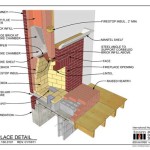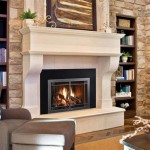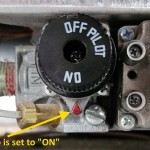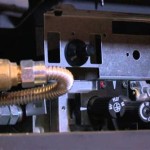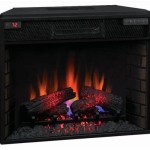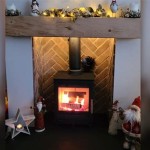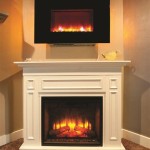Cost To Install A Wood Burning Fireplace Insert: A Comprehensive Guide
Installing a wood-burning fireplace insert can be a significant home improvement project, offering both functional heating and aesthetic appeal. Understanding the costs involved is crucial for budgeting and planning. The total cost encompasses several factors, including the insert itself, installation labor, necessary modifications to the existing fireplace, and permitting fees. This article provides a detailed breakdown of these costs, exploring the various elements that contribute to the overall expense.
A fireplace insert is designed to fit directly into an existing masonry fireplace, providing a more efficient and controlled method of heating compared to traditional open fireplaces. They essentially transform an inefficient open fireplace into a more effective heating appliance. The efficiency of a wood-burning insert is significantly higher, reducing heat loss up the chimney and directing more heat into the living space. They are typically constructed of cast iron or steel and encased in a decorative shell.
Several factors influence the overall cost of installation. The type of insert chosen, the complexity of the installation process, and the geographical location all play a crucial role. Moreover, unexpected issues discovered during the inspection of the existing chimney and fireplace can also impact the final price. Therefore, obtaining multiple quotes from qualified installers is highly recommended before proceeding with the project.
Factors Influencing the Cost of a Wood Burning Fireplace Insert
The cost of a wood-burning fireplace insert is influenced by a variety of interconnected factors. An understanding of these elements aids in making informed decisions and accurately predicting the expenses involved. Key cost determinants include the insert's size and features, the chimney liner requirements, and potential modifications needed to the existing fireplace.
Insert Size and Features: The size of the fireplace insert, measured in BTUs (British Thermal Units), directly influences its price. A larger insert, capable of heating a larger area, will generally cost more than a smaller unit. Additionally, features such as a blower fan, catalytic combustor, or automatic thermostat can increase the price. A blower fan helps circulate heated air more effectively, while a catalytic combustor reduces emissions and improves efficiency. A thermostat provides more precise temperature control, adding to the overall cost but potentially increasing long-term savings.
Chimney Liner Requirements: A proper chimney liner is essential for the safe and efficient operation of a wood-burning fireplace insert. Many older chimneys are not adequately sized or structurally sound to handle the high temperatures and corrosive byproducts of wood combustion. In such cases, a new stainless steel chimney liner is required. This can be a significant portion of the overall installation cost, often ranging from several hundred to several thousand dollars, depending on the height of the chimney and the complexity of the installation.
Fireplace Modifications: The existing fireplace may require modifications to accommodate the new insert. This could involve widening the fireplace opening, repairing damaged masonry, or installing a block-off plate to seal the fireplace damper. These modifications can add to the overall cost, particularly if the existing fireplace is in poor condition. Furthermore, any aesthetic upgrades, such as a new hearth or surround, will also contribute to the final expense.
Breaking Down the Cost Components
The total cost of installing a wood-burning fireplace insert can be divided into distinct components, each contributing a portion of the overall expense. Understanding these components provides a clearer picture of where the money is being allocated and allows for better budget management. These components typically include the cost of the insert itself, the chimney liner, the installation labor, and potentially any permitting fees.
Cost of the Fireplace Insert: The fireplace insert itself represents a significant portion of the overall cost. Prices vary widely depending on the size, brand, features, and efficiency of the unit. Entry-level models might start around $1,500, while high-end, high-efficiency inserts can cost upwards of $5,000 or more. When selecting an insert, consider factors such as the square footage of the area to be heated, desired burn time, and aesthetic preferences. Researching different brands and models, and comparing specifications and reviews, is crucial for making an informed decision.
Chimney Liner Installation: As previously mentioned, a chimney liner is often required for safe and efficient operation. The cost of a stainless steel chimney liner can range from $800 to $3,000 or more, depending on the height and complexity of the chimney. Factors influencing the price include the diameter of the liner, the type of stainless steel used, and the ease of access to the chimney. Installing the liner involves running it from the top of the chimney down to the fireplace insert, ensuring proper sealing and insulation.
Installation Labor: Professional installation is highly recommended for wood-burning fireplace inserts to ensure safety and compliance with local building codes. Labor costs typically range from $500 to $2,000 or more, depending on the complexity of the installation and the geographic location. The installation process involves preparing the fireplace opening, connecting the insert to the chimney liner, and ensuring proper ventilation. It is essential to hire a qualified and experienced installer with proper certifications and insurance.
Permitting Fees: Many municipalities require permits for the installation of wood-burning appliances. Permitting fees vary widely depending on the location, but they typically range from $50 to $500. Obtaining the necessary permits ensures that the installation complies with local building codes and safety regulations. Failure to obtain permits can result in fines and potential legal issues.
Strategies for Managing Installation Costs
While installing a wood-burning fireplace insert can be a costly investment, several strategies can help manage and potentially reduce the overall expense. These strategies primarily focus on careful planning, obtaining multiple quotes, and considering alternative options.
Obtain Multiple Quotes: The most effective way to manage installation costs is to obtain multiple quotes from qualified installers. Contact at least three or four different companies and request detailed estimates that outline the cost of the insert, chimney liner, installation labor, and any other associated fees. Carefully compare the quotes, paying attention to the materials used, the scope of work, and the warranty offered. Avoid selecting the cheapest option solely based on price, as this may compromise the quality of the work and potentially lead to future problems.
Consider Alternative Options: Explore alternative options for heating and modifying the existing fireplace. In some cases, a less expensive fireplace insert might be sufficient to meet heating needs. Alternatively, consider repairing existing damage to the masonry fireplace yourself, if you have the necessary skills and experience, to reduce labor costs. However, never compromise safety by attempting to perform tasks that require specialized knowledge or equipment. For example, tampering with gas lines or electricity should only be done by licensed professionals.
Plan Ahead: Planning the installation during the off-season, such as spring or summer, can potentially lead to lower prices. Demand for fireplace insert installations is typically lower during these months, which may prompt installers to offer discounts or promotions. Additionally, planning ahead allows ample time to research different options, obtain quotes, and secure necessary permits without being rushed.
Evaluate Existing Infrastructure: Before proceeding with the installation, thoroughly evaluate the existing fireplace and chimney. Identify any potential problems, such as damaged masonry, a cracked chimney flue, or inadequate ventilation. Addressing these issues before the installation process begins can prevent unforeseen complications and costly surprises. Consider having the chimney inspected by a qualified professional to assess its condition and identify any necessary repairs or upgrades.
Choosing the right wood-burning fireplace insert and ensuring its proper installation is an important choice for homeowners seeking efficient and aesthetically pleasing heating solutions. By carefully considering the factors discussed in this article, homeowners can make informed decisions and effectively manage the costs associated with this home improvement project.

Estimated Page Fireplaces Stoves Inserts Wood Gas Pellet

What Does It Cost To Install A Fireplace Vs Wood Stove Stamford Fireplaces

Fireplace Insert Installation Wood Burning Inserts
.aspx?strip=all)
Cost Of Operating A Wood Insert Cord Calculator Regency

Wood Burning Fireplace Inserts Insert Installation

How Much Does Fireplace Installation Cost 2024 Data Angi

Estimated Page Fireplaces Stoves Inserts Wood Gas Pellet

How Much Does It Cost To Install A Gas Fireplace Homeserve Usa

Estimated Page Fireplaces Stoves Inserts Wood Gas Pellet

2024 Fireplace Installation Costs Gas Wood Burning Electric

